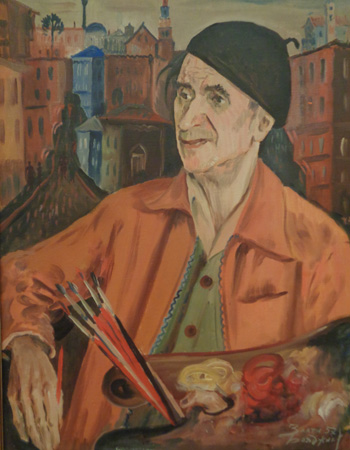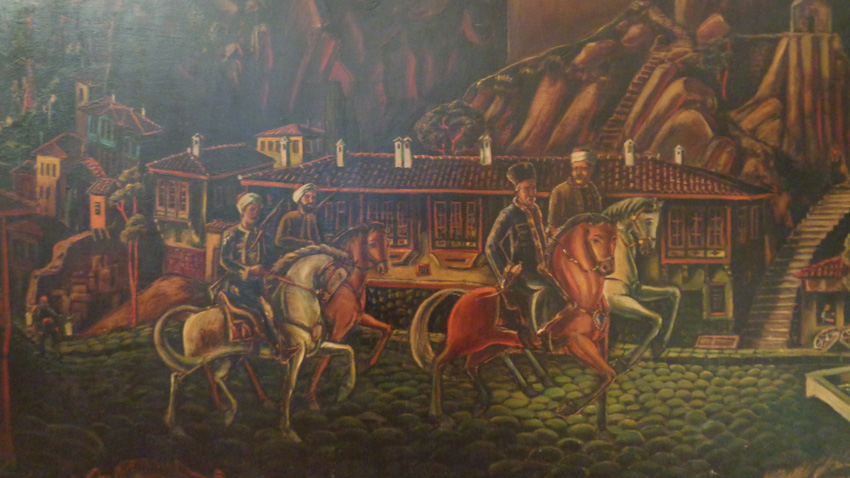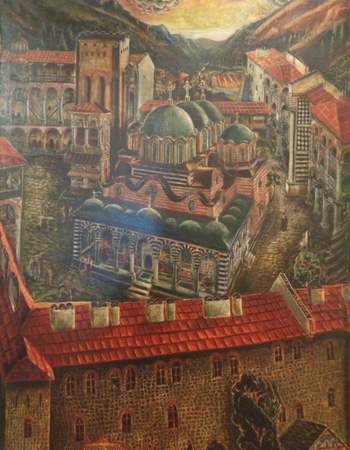From 7 June to 14 August the Sofia City Gallery displays an exhibition largely representative of one of Bulgaria's leading painters Tsanko Lavrenov (1896-1978). It has come to mark the 120th birth anniversary of the artist. The exhibition features more than 300 works of painting, prints and drawings. We talked to Dr. Stanislava Nikolova, one of the curators of the exhibition.
 What was Tsanko Lavrenov's family like?
What was Tsanko Lavrenov's family like?
„Lavrenov grew up in a well-to-do family. He was also properly educated. His mother had finished a French school and taught her children French. Later in life Tsanko Lavrenov demonstrated a special affinity for that language. There were musicians in the family, and the future painter lived in an artistic atmosphere. In fact, his first dream was to become a musician. Only later, in high school, he started drawing caricatures and his visual talent showed.”
What was the context of Bulgarian art when Tsanko Lavrenov's talent prospered?
„This was the time of the wars and he drew some political caricatures influenced by the turbulent times. In the 1920s he spent a year in Vienna where he studied at the St. Ann school of painting and had plans to later join the Vienna Academy of Art. This though did not happen and the artist returned to Bulgaria. At that time this country was the scene of secessionist art with a few big names in the genre - Nikolay Raynov, Sirak Skitnik and Ivan Milev. Tsanko Lavrenov, when he returned from Vienna, saw the one-artist exhibition of Nikolay Raynov that opened in 1922 in Plovdiv. So the artist started experimenting with expressionism. The current exhibition's motto is Between Modernity and Canon and this is not surprising, because many lovers of Tsanko Lavrenov's art are not aware of his early period when his artworks were consistent with the output of other big names.”

What were the subjects that he preferred for his paintings?
“The Old Town of Plovdiv was central to his art, its houses and streets, and its dignitaries, the wealthy merchants of Plovdiv. He also loved to paint nature, the breath-taking Rhodope Mountains.”
 Tsanko Lavrenov has a major contribution into the theme of Mount Athos.
Tsanko Lavrenov has a major contribution into the theme of Mount Athos.
„He made a cardinal contribution into this theme. His Athos cycle is important in the history of Bulgarian art. He used a blend of graphic techniques in this cycle, such as the old National Revival print technique. Also, the Mount Athos monasteries are depicted from different points of view - they are seen from above, from aside too, and the artist has simultaneously captured the people and nature to achieve a comprehensive depiction of Mount Athos.”
The exhibition features previously unknown works by the artist - such as superb illustrations for magazines such as Recall, Children's Life, etc. Numerous archival documents, photographs and letters are on display as well. Visitors can enjoy audio guides in Bulgarian and English with texts about some of the emblematic paintings of Tsanko Lavrenov. The exhibition is accessible for blind visitors thanks to tactile maps of some of the works accompanied by explanatory text in audio guides. After Sofia the exhibition with works by Tsanko Lavrenov will be shown in his native Plovdiv.
English Daniela Konstantinova
For the first time in Sofia, the British show STOMP will perform in Hall 1 of the National Palace of Culture (NDK) from 8 to 10 November 2024. The show, which combines dance, music and theatre, will present its infectious blend of rhythm, drama and..
A protest is being held tonight in front of the Ivan Vazov National Theatre against the premiere of the play Arms and the Man by Bernard Shaw, staged by John Malkovich , which will open at 7 p.m. "This play should not be staged at the National..
A Bulgarian production company will build a new film center worth EUR 15 million in the Sofia-Bozhurishte Industrial Park. The film center will span over 30,000 square meters. The contract for the sale of the land will be signed at the end of..
The fourth national Biennial of Illustrations opens today in the triangular tower of Serdica, part of the Regional Museum of History in Sofia. As..

+359 2 9336 661
